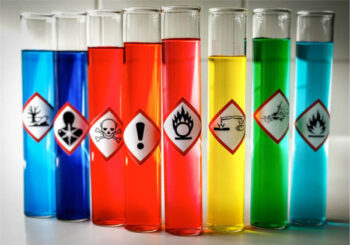Guest Writers for Wake Up World
We exist in an era marked by remarkable advancements and alarming health hazards. These hazards stem from ubiquitous environmental toxins prevalent in government-approved products – food, medication, and emissions. A comprehensive exploration of these covert risks and effective natural strategies to counteract them is more crucial than ever.
The Escalating Crisis of Chronic Diseases
In the past two decades, the incidence of chronic diseases has skyrocketed. World Health Organization statistics reveal a troubling trajectory. As of 2021, non-communicable diseases, including heart disease, cancer, diabetes, and chronic respiratory diseases, accounted for 70% of global deaths. This percentage marked a significant increase from the start of the century, when these diseases accounted for around 60% of global deaths.
Increasingly, researchers are recognizing the complex relationship between these diseases and environmental toxins. Exposure to a plethora of synthetic and natural substances has been linked to a host of health problems. These problems range from hormonal disruptions to neurodegenerative disorders and cancers. There is now consensus within the medical community that these toxins play a role in driving the increasing prevalence of chronic diseases.
As life expectancy increases and people live longer, the burden of these chronic diseases on individuals and healthcare systems continues to grow. Aside from the severe health implications, these illnesses also bring about significant economic consequences. They lead to increased healthcare costs and loss of productivity, which further strain the socio-economic fabric of societies.
Unpacking 5 Common Environmental Toxins
1 | Glyphosate
This herbicide, the main ingredient in Roundup, is widely used in agriculture. Despite its efficacy in controlling weeds, glyphosate’s impact on human health raises significant concerns. Research has linked it to various ailments, including endocrine disruption and certain cancers. Worryingly, even low-level exposure may increase disease risk, suggesting that its residues on food might be more harmful than previously believed. Given the global reliance on glyphosate-based herbicides, its presence in our food system represents a pervasive threat.
2 | Mercury
Mercury exposure poses substantial health risks. Thimerosal, a mercury-containing compound used as a preservative in some vaccines, has been a contentious issue. Although thimerosal has been phased out in many countries due to potential risks, some vaccines and pharmaceuticals may still contain it. Another source of mercury is dental amalgams, a widely used material for dental fillings. Studies have linked mercury to a variety of health problems, such as neurological damage, kidney disease, and autoimmune disorders.
3 | Lead
Despite efforts to minimize lead exposure, this heavy metal continues to pose significant health risks. One common source is contaminated water, resulting from aging infrastructure and lead-containing plumbing. Lead exposure can lead to severe health problems, particularly in children, including neurological damage, learning disabilities, and impaired growth. With mounting evidence of its health impacts, addressing lead contamination remains a pressing public health issue.
4 | Phthalates and Parabens
These chemicals are common in personal care products. Phthalates are used to increase flexibility in plastics, while parabens act as preservatives. The ubiquitous nature of these compounds means that most people are exposed to them daily. Research has linked these chemicals to a range of health problems, including endocrine disruption, reduced fertility, and an increased risk of certain cancers. Their prevalence in everyday products makes them a pervasive environmental health concern.
5 | Volatile Organic Compounds (VOCs)
VOCs are chemicals released as gasses from various household products, such as paints, varnishes, and cleaning products. These compounds can contribute to poor indoor air quality, leading to immediate health effects like eye, nose, and throat irritation, headaches, and nausea. Long-term exposure can lead to more severe health effects, including liver, kidney, and central nervous system damage, and some VOCs are suspected or known to cause cancer in humans.
Natural Strategies to Combat Environmental Toxins
Choose Organic Foods: The most straightforward way to avoid pesticide residues, like glyphosate, is to opt for organically grown foods. These products are grown without synthetic pesticides and are, therefore, less likely to contain pesticide residues. While organic food might be more expensive, the investment in health could offset potential healthcare costs in the future. Moreover, supporting organic farming contributes to a more sustainable food system by promoting soil health and biodiversity and reducing water contamination.
Reduce Mercury Exposure: Minimizing mercury exposure involves several steps. Be mindful of the types of fish you consume. Larger, predatory fish like tuna and swordfish typically have higher mercury levels than smaller fish. When possible, choose vaccines without thimerosal, particularly for children and pregnant women. For dental work, discuss the use of mercury-free alternatives to dental amalgams with your dentist.
Filter Your Water: Considering the potential for water contamination with lead and other pollutants, investing in a good quality water filter can be a crucial step towards reducing your toxic exposure. When choosing a water filter, ensure it is certified to remove the specific contaminants found in your local water supply. Regularly replacing filter cartridges is also essential to maintain the effectiveness of the filter over time.
Choose Natural Personal Care Products: To reduce exposure to phthalates, parabens, and other harmful chemicals, consider transitioning to natural personal care products. Check product labels and choose those with simpler ingredient lists and without harmful chemicals. It might take time to find natural products that work for you, but the reduction in toxic exposure could have long-term health benefits.
Improve Indoor Air Quality: Reducing indoor exposure to VOCs and other air pollutants can be achieved by improving ventilation and choosing low-VOC or VOC-free products. Air purifiers can help remove pollutants from the air, and certain houseplants can also improve indoor air quality. Regular maintenance of heating and cooling systems can also help reduce indoor air pollution.
Detoxifying the Body Naturally
The reality of modern life is that complete avoidance of environmental toxins is nearly impossible. Hence, supporting the body’s natural detoxification processes is a crucial strategy. This can involve regular physical activity, which helps to promote the elimination of toxins through sweat and supports overall metabolic health. Hydration is also essential to support kidney function, another crucial avenue for toxin elimination.
Diet also plays a pivotal role in detoxification. Cruciferous vegetables, like broccoli and kale, contain compounds that support liver detoxification pathways. Fiber-rich foods help to support healthy bowel movements, which is another important pathway for the elimination of toxins from the body.
Another detoxification strategy is the use of sauna therapy. Regular sauna use can help promote the elimination of toxins through sweat. It’s important to note that sauna use should be approached with care, and it’s always a good idea to discuss it with a healthcare professional, especially for those with underlying health conditions.
Final Thoughts
The complexity of environmental toxins and their influence on our health underscore the need for urgent action. While individual strategies can help reduce exposure and mitigate effects, broader societal changes are also needed. We need to advocate for stricter regulations on toxic substances and greater transparency from industries. Only through collective action can we hope to address this pervasive health threat effectively.
Originally published at The Truth About Cancer and reproduced here with permission.
About the author:
 Ty Bollinger is a health freedom advocate, cancer researcher, former competitive bodybuilder and author. After losing several family members to cancer, he refused to accept the notion that chemotherapy, radiation, and surgery were the most effective treatments available for cancer patients. He began a quest to learn all he possibly could about alternative cancer treatments and the medical industry. What he uncovered was shocking. There is ample evidence to support the allegation that the “war on cancer” is largely a fraud and that multinational pharmaceutical companies are “running the show.” Ty has now made it his life mission to share the most remarkable discovery he made on his quest: the vast majority of all diseases, including cancer, can be easily prevented and even cured without drugs or surgery.
Ty Bollinger is a health freedom advocate, cancer researcher, former competitive bodybuilder and author. After losing several family members to cancer, he refused to accept the notion that chemotherapy, radiation, and surgery were the most effective treatments available for cancer patients. He began a quest to learn all he possibly could about alternative cancer treatments and the medical industry. What he uncovered was shocking. There is ample evidence to support the allegation that the “war on cancer” is largely a fraud and that multinational pharmaceutical companies are “running the show.” Ty has now made it his life mission to share the most remarkable discovery he made on his quest: the vast majority of all diseases, including cancer, can be easily prevented and even cured without drugs or surgery.
For more information, visit:

If you've found value in our articles, we invite you to support the release of our brand-new book, "Gratitude Practices for Kids: A Practical Guide for Adults to Instill a Spirit of Appreciation and Positivity in the Next Generation."
"Gratitude Practices for Kids" brings together over 25 innovative and accessible practices designed to enhance gratitude in everyday life. This comprehensive guide is backed by 17 scientific studies, ensuring each concept is grounded in research, underscoring our commitment to nurturing growth, emotional intelligence, and positive interactions between adults and children.
We encourage you to opt for the paperback version to celebrate this new release. Dive into its fresh pages away from digital distractions, allowing you to immerse yourself in the transformative practices it offers.
Over recent years, Wake Up World has faced significant online censorship, which has impacted our financial ability to operate. Moving into book publishing represents a strategic step to secure the ongoing funds needed to continue our mission. By purchasing Gratitude for Kids, you help us keep our content free and accessible to everyone, avoiding needing a paywall. With over 8,500 articles published in the last 13 years, we remain dedicated to keeping our valuable content open to all.









